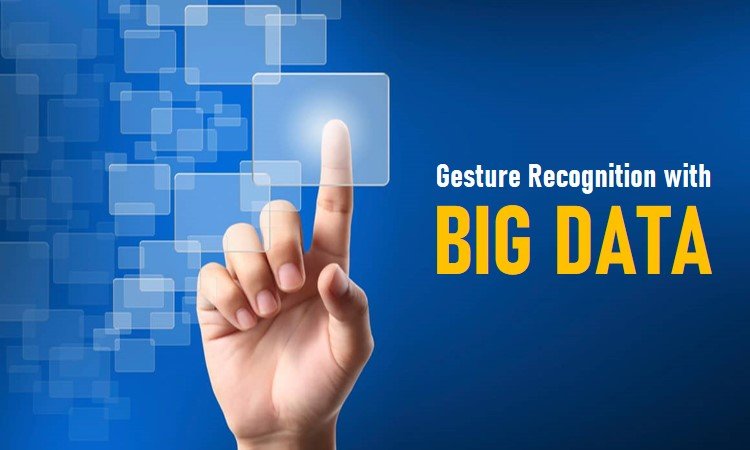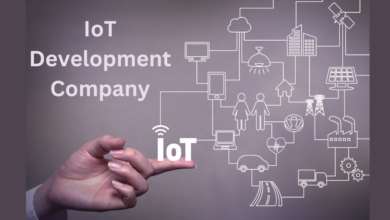Gesture recognition makes our lives safer and more inclusive

Perceptual computing user interfaces, such as gesture recognition, enable computers to collect and interpret human gestures as instructions. Gesture Recognition is defined as the computer’s ability to recognize and understand gestures and then execute instructions based on those movements in a broad sense. The majority of customers have acquainted with the idea thanks to games like X-Box, and PlayStation.
Over the course of many decades, keyboards and mice have served as the primary input devices for computers. However, as the popularity of omnipresent and ubiquitous devices and equipment that enables users to grip virtual objects grows, the usage of hand or body gestures is becoming more important. Gesture controls have become important to the human-computer interaction system.
Technology for Gesture Control
The gesture control technology is based on the identification of hand gestures. We may think of Gesture recognition as the first step toward computers learning to recognize and interpret human body language. Compared to simpler user interfaces, such as the mouse and keyboard, it creates a richer bridge between computers and people. Recognition and interpretation of human body motions enable the ability to engage with a computer system using gesture control devices.
What does the word term “gesture” mean?
It is essential to understand the definition of the word “gesture” to understand how gesture recognition works. When used in its broadest definition, the term gesture may apply to any non-verbal communication meant to convey a particular message to the recipient. In the area of gesture recognition, a gesture is defined as any bodily movement, big or little, that may be detected by a motion sensor and recognized as a gesture. Everything from a simple tap of the finger to a roundhouse kick or a nod of the head to a pinch or wave of the hand may be considered a kind of initiation, and it is possible to make gestures that are large and sweeping or little and restricted. There are various instances when the notion of “gesture” may also include the use of voice instructions or spoken directives.
Background
A critical component of Human-Computer Interaction is the recognition of gestures (HCI). It may be used to enhance user interfaces in a variety of industries, such as virtual reality in the gaming sector or gesture-based remote control of robot arms. In some cases, it may even make life simpler for those with impairments by serving as assistive technology, such as sign language interpretation. Gesture control technology with the help of big data has shown tremendous promise in the education field. The use of gesture control technology in higher education will continue to evolve in the future, with more experimentation in the teaching and learning environment being undertaken.
Beyond the Voice: Artificial Intelligence and Gesture Control
- In some respects, the advent of AI and Big data analytics services is all about trying to make the world a more pleasant and intuitive place to live and interact. Nowadays, in the industries, developers are using several big data technologies. Companies can be more efficient, gadgets can become more productive, and the final results may be more enticing if we use the appropriate machine learning algorithms and artificial intelligence solutions.
- Also, we are aware that digital switches have completely transformed the manner in which we interact with our homes. The wonderful thing about digital technology is that these gadgets are very portable. Geofencing is an example of what you can accomplish. You have the option of remote access. You are no longer have to be present at your residence to switch off the lights or shut the garage door.
- With a large number of difficult instructions and streaming commands, such as music, voice is redefining the frontier. Voice communication is intuitive, it is natural, and it is a simple method of communication.
Aspects of gesture control outside of the gaming industry
- While gesture control is intended to be used for entertainment purposes, the platform has the potential to be used for a variety of other applications as well. Examples include businesses that have begun creating realistic coaching programs. These programs help players improve their performance in sports, such as baseball and golf. Alternatively:
- People use touchscreens to manage digital signs and display points in retail. So instead, we may use gesture control to control them more conveniently and without any hygiene concerns. As a result, Customers may interact with information throughout their purchasing experiences more rapidly and easily.
- In the transportation field, gesture control might be a useful tool for reducing distractions while driving. Automotive makers develop more natural methods for drivers to handle infotainment systems. From this gesture control assisted by artificial intelligence might help drivers maintain their concentration on the road.
- In terms of technology, drone manufacturers are already developing drones that can fly autonomously without the need for a controller.
- With a large number of difficult instructions and a streaming commands, such as music, voice is redefining the frontier. Voice communication is intuitive, it is natural, and it is a simple method of communication.






